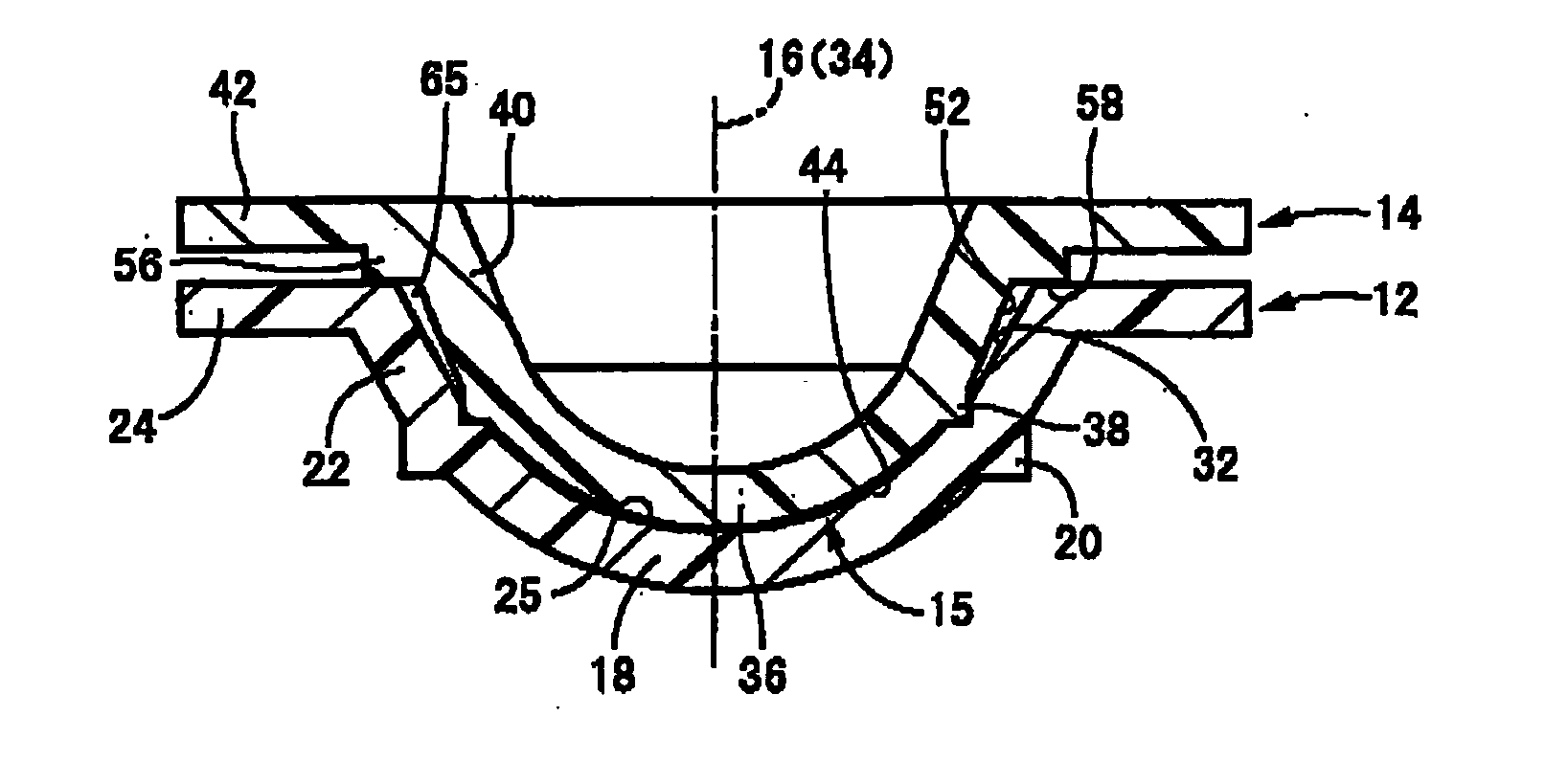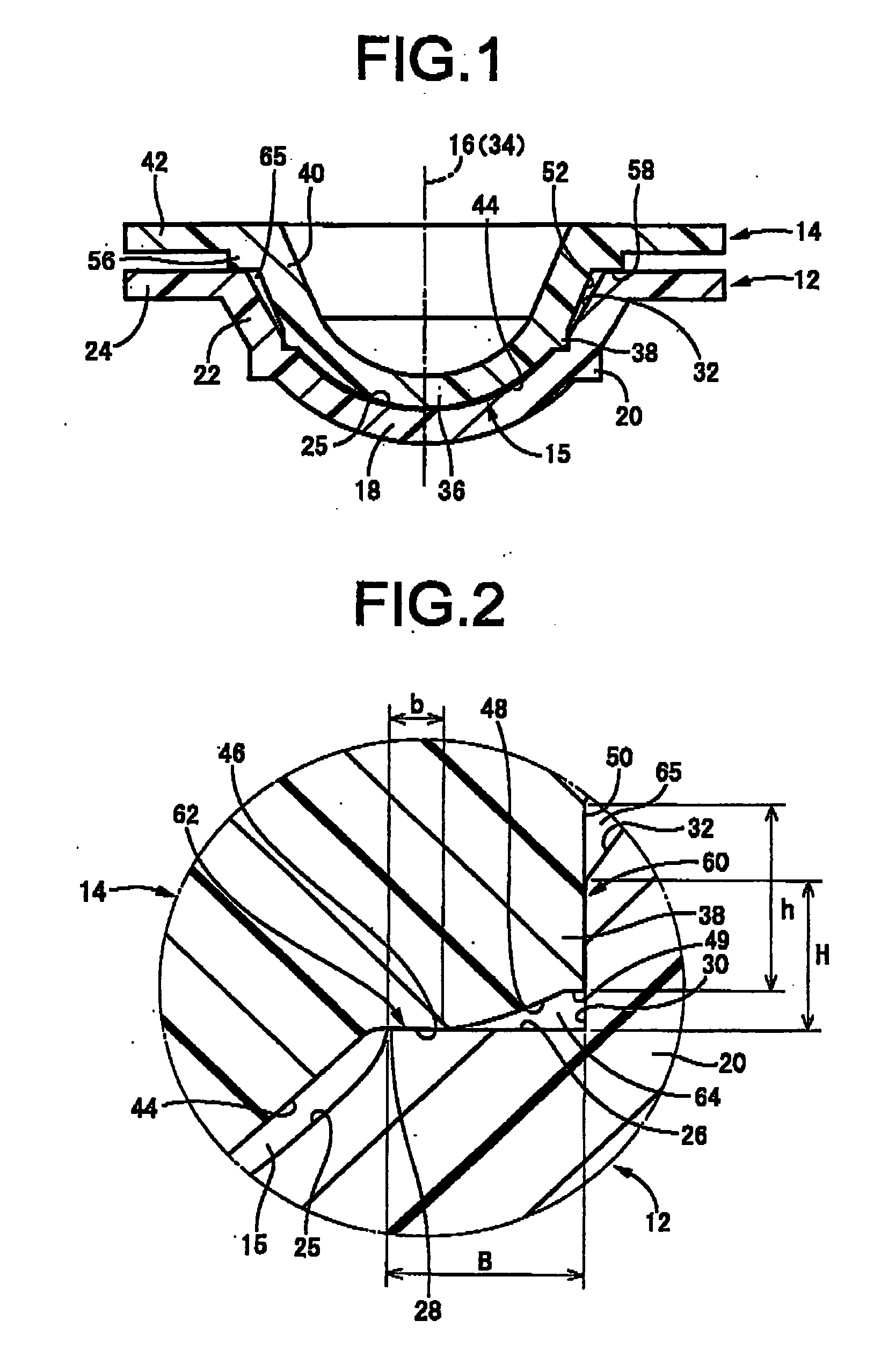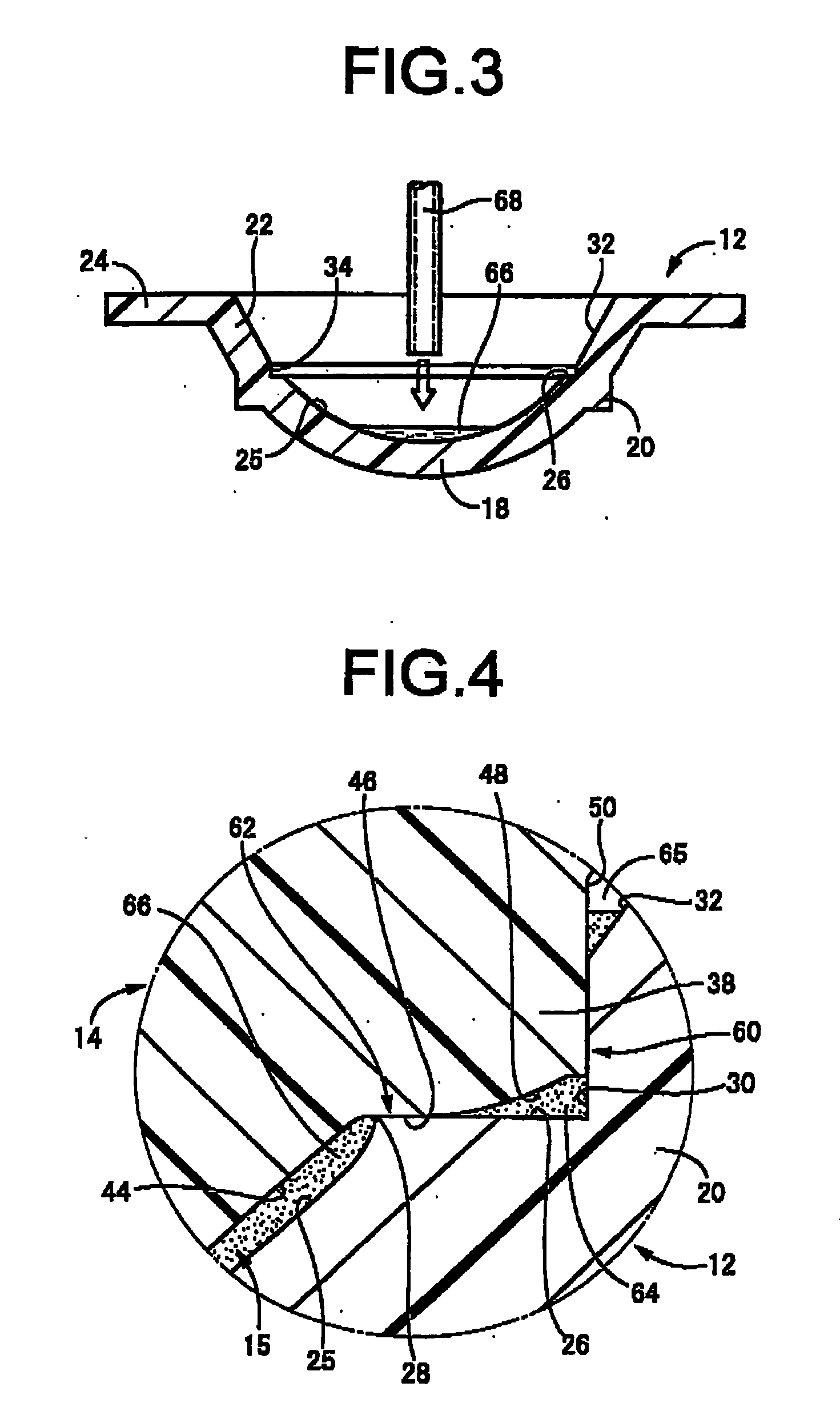Forming die for contact lens and contact lens manufacturing method using the forming die
a technology of contact lens and forming die, which is applied in the direction of dough shaping, manufacturing tools, applications, etc., can solve the problems of forming gap between the annular edge portion and the abutting face, difficult to provide stable closure at the peripheral portion of the forming cavity, and risk of burrs or other molding defects occurring at the peripheral edge of the contact lens molding, etc., to achieve effective and stably closure, high accuracy
- Summary
- Abstract
- Description
- Claims
- Application Information
AI Technical Summary
Benefits of technology
Problems solved by technology
Method used
Image
Examples
Embodiment Construction
[0019] The invention in a first mode thereof is a contact lens forming die comprising a female die having a concave forming face and a male die having a convex forming face, which are mated with each other to create a forming cavity between the opposed concave forming face and convex forming face, the forming cavity adapted to be filled with polymerizable monomer which is polymerized to form a contact lens, characterized in that by means of mating the female die and the male die with each other, annular flat mutual contact areas extending over a width of 0.01 mm or greater in a direction orthogonal to a die mating direction are formed by abutting the female and male dies at an outer peripheral side of the concave forming face and the convex forming face; and at an outer peripheral side of the mutual contact areas an auxiliary cavity of substantially closed structure to be filled with the polymerizable monomer during molding is formed by the female and male dies positioned spaced apa...
PUM
| Property | Measurement | Unit |
|---|---|---|
| width | aaaaa | aaaaa |
| shrinkage | aaaaa | aaaaa |
| temperature | aaaaa | aaaaa |
Abstract
Description
Claims
Application Information
 Login to View More
Login to View More - R&D
- Intellectual Property
- Life Sciences
- Materials
- Tech Scout
- Unparalleled Data Quality
- Higher Quality Content
- 60% Fewer Hallucinations
Browse by: Latest US Patents, China's latest patents, Technical Efficacy Thesaurus, Application Domain, Technology Topic, Popular Technical Reports.
© 2025 PatSnap. All rights reserved.Legal|Privacy policy|Modern Slavery Act Transparency Statement|Sitemap|About US| Contact US: help@patsnap.com



